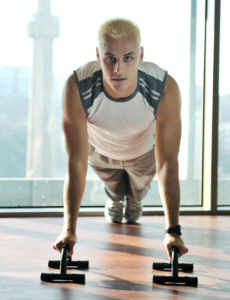
study, published in the open-access journal Frontiers in Human Neuroscience, shows that older people who routinely partake in physical exercise can reverse the signs of aging in the brain,
Dancing has the most profound effect.
In this study, two different types of physical exercise (dancing and endurance training) both increase the area of the brain that declines with age.
it was only dancing that lead to noticeable behavioral changes in terms of improved balance.
Elderly volunteers, with an average age of 68, were assigned either an eighteen-month weekly course of learning dance routines, or endurance and flexibility training.
 Both groups showed an increase in the hippocampus region of the brain. This is important because this area can be prone to age-related decline and is affected by diseases like Alzheimer’s.
Both groups showed an increase in the hippocampus region of the brain. This is important because this area can be prone to age-related decline and is affected by diseases like Alzheimer’s.
It also plays a key role in memory and learning, as well as keeping one’s balance.
Seniors in the dance group with constantly changing dance routines of different genres
These extra challenges are thought to account for the noticeable difference in balance displayed by those participants in dancing group.
Exercise keeps you healthy – not only physically: more and more studies show that regular exercise also helps with emotional problems. In some mental illnesses, sport is even as effective as psychotherapy or medication.
In many clinics sports therapy is now part of the regular treatment offer: On the one hand because mentally ill patients are more prone to physical problems such as cardiovascular diseases or diabetes, since they usually move less, eat unhealthy and often smoke. Mental ill people, among other things, die on average up to 20 years earlier than healthy people.
It does not take much to reverse that.
Sport also directly improves mental well-being. Week exercises reduces the risk of depression, anxiety disorders or addictions. In addition, the research group reports that subjects with a mental illness were more likely to recover by exercising regularly.
Especially with anxiety disorders and depression, physical exercise seems to be a sensible therapy measure. Surveys indicate that cycling or jogging can reduce anxiety in patients with phobias and panic disorders. In some studies, exercise hours were even as good as behavioral therapy and more helpful than other measures designed to reduce anxiety.
Similarly, researchers assess the use of sports in depression : Regular training is therefore as effective as a psychotherapy or psychotropic drugs. Researchers and therapists prefer endurance sports such as walking, jogging or cycling.
Fun enhances the positive effects
To what extent, how often and how intense the sport works best, but is controversial. It is recommended to train for 30 minutes at moderate to high intensity for a minimum of eight weeks at least three times a week. It is less important whether the sport takes place in the group and which sport it is.
The benefits for the mind
Physical activity can have its beneficial effects in many ways, including:
• It improves mood, vitality and quality of life.
• It contributes to a sense of pride, self-esteem and overall well-being, especially when it contributes to desired weight loss.
• It increases the ability to concentrate and to perform daily activities.
• It reduces the level of stress and improves the ability to manage it.
• It promotes better sleep.
If you live with a mental illness on a daily basis, including exercise in your daily routine can bring you the benefits mentioned above, in addition to reducing your symptoms and helping you function better. To get the most out of your approach, choose activities that appeal to you and suit your abilities and lifestyle.
The ideal level of physical activity
You do not have to become a top athlete to see the benefits of physical activity on your mental health. Exercising (especially aerobic) exercises of moderate intensity for a duration of at least 15 to 30 minutes a day may be sufficient to note changes in mood and well-being. If you feel able to do more and feel like it, go for it cheerfully! Remember, however, that when you start a more intensive exercise program when you have a chronic illness, such as heart disease, talk to your doctor first. It may also be wise to use the services of a qualified personal trainer.
In conclusion, putting physical activity at the heart of its priorities is a simple and accessible measure for all to take care of one’s well-being and health, including mental health. Keep in mind that your pharmacist can be a valuable advisor for medications, but also for non-pharmacological measures to help you stay physically and mentally fit. Do not hesitate to consult it.






